Karyotyping
Karyotyping, or blood chromosome analysis, is a highly useful test in the diagnosis and management of fertility issues. However, most people who undergo the test don't have a good understanding of why it is done or what the results reveal.
The prefix "karyo" refers to the fact that the nucleus of the cell is studied, and the base word "type" refers to the fact that the test is a characterisation, or analysis of the character. Put together, the word karyotype means a characterisation of the cell nucleus.
What are cells?
Our bodies are made up of billions of cells. There are many different kinds of cells, including blood cells, skin cells, and bone cells. Our genetic material is contained in a structure within the cell called the nucleus. Every cell in the body, with the exception of the red blood cell, has its own nucleus containing a complete set of genetic material.
What's inside a cell nucleus?
Inside of a normal nucleus of the cell there are 46 rod-shaped structures called chromosomes. The chromosomes come in pairs, 23 coming from the mother and 23 coming from the father. Scientists label the chromosomes with numbers, calling them chromosome number 1 through chromosome number 22. The 23rd pair of chromosomes are the sex chromosomes, normally two X's for a female or one X and one Y chromosome for a male.
The chromosomes vary in size according to the number, with chromosome number 1 being the largest and chromosome number 22 being labelled the smallest of the numbered chromosomes. The X chromosome is about the same size as the number 7 chromosome, and the Y chromosome is much smaller, about the size of a number 21 or 22 chromosome.
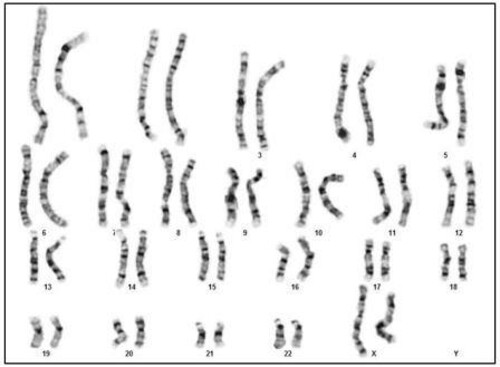
46, XX
What's inside a chromosome?
Each chromosome contains hundreds or thousands of genes, depending on the size of the chromosome. Genes are units of heredity and are constructed of DNA. For the most part, individual genes are too small to be seen even through a powerful microscope. Chromosomes, however, can be seen under a microscope.
What is a karyotype?
A karyotype is a photograph of all of the chromosomes of an individual cell. The chromosomes in the karyotype are usually lined up into rows in pairs, so that they are in order from the largest to the smallest in size. The photograph is taken through a microscope, so that the longest chromosomes usually appear to be about an inch long. In reality, of course, they are so small that they are not visible to the naked eye.
How is a karyotype analysis performed?
Karyotypes are usually constructed by laboratory scientists and analysed by cytogeneticists who are trained specialists in the study of chromosomes. The cells must be grown and advanced to a specific cell stage that is optimal for analysis. The process of growing the cells, dropping them onto slides, arranging the chromosomes into a karyotype and analysis by a cytogeneticist usually takes 1-2 weeks in our laboratory.
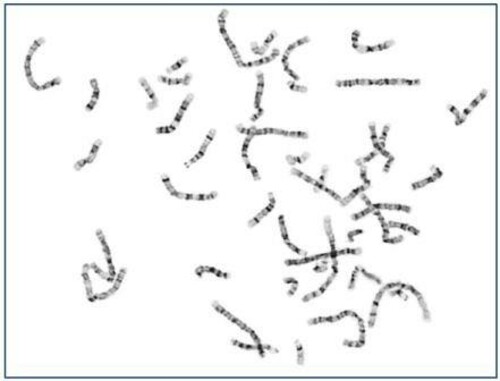
46, XY Metaphase (pictured above)
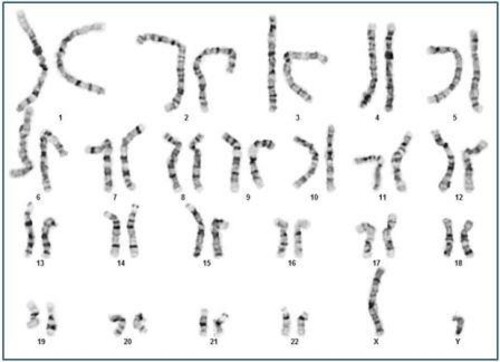
46, XY Karyotype (pictured above)
What can a karyotype test tell us?
Karyotype analysis determines the number of chromosomes in the cells and whether there are any pieces of chromosomal material that are missing, extra or rearranged. Any variation from the normal chromosome number and arrangement can have implications for a person's fertility and the risk for having a baby with birth defects.
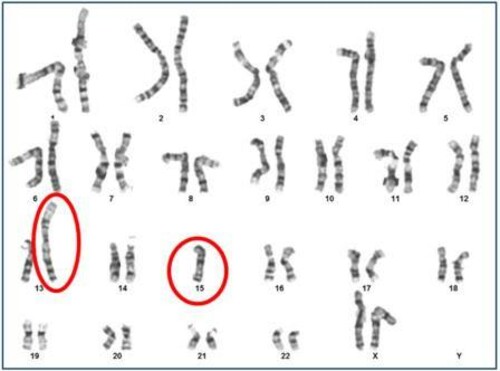
Translocation between 13/15 (pictured above)
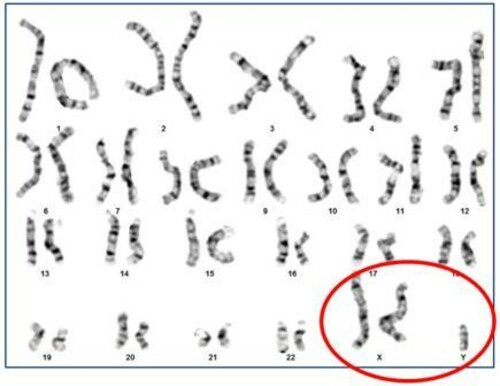
Sex Chromosome Variation (pictured above)
What can't a karyotype tell us?
There are many genetic disorders that are the result of single gene mutations such as very small deletions or duplications of the genes or very subtle chromosome rearrangements. Additionally, there are many genetic disorders that are caused by multiple genes interacting. These disorders cannot be detected by chromosome analysis.
Examples of conditions that cannot be detected by karyotyping include:
- Cystic fibrosis
- Tay-Sachs disease
- Sickle cell disease
- Dwarfism
These are only a few examples. The complete list would contain thousands of genetic disorders that cannot be detected by chromosome analysis. However, many of them can be detected by other methods if required – please discuss with your Fertility Specialist.
Karyotype testing for both partners having difficulty conceiving can provide extremely useful information in determining the cause of infertility, and the most appropriate treatment. Knowledge of chromosomal variations can prevent the use of treatments with a high chance of failure, and can increase your chance of having a healthy baby.
To find out more about karyotyping, call us on 1800 111 483 or contact us below.